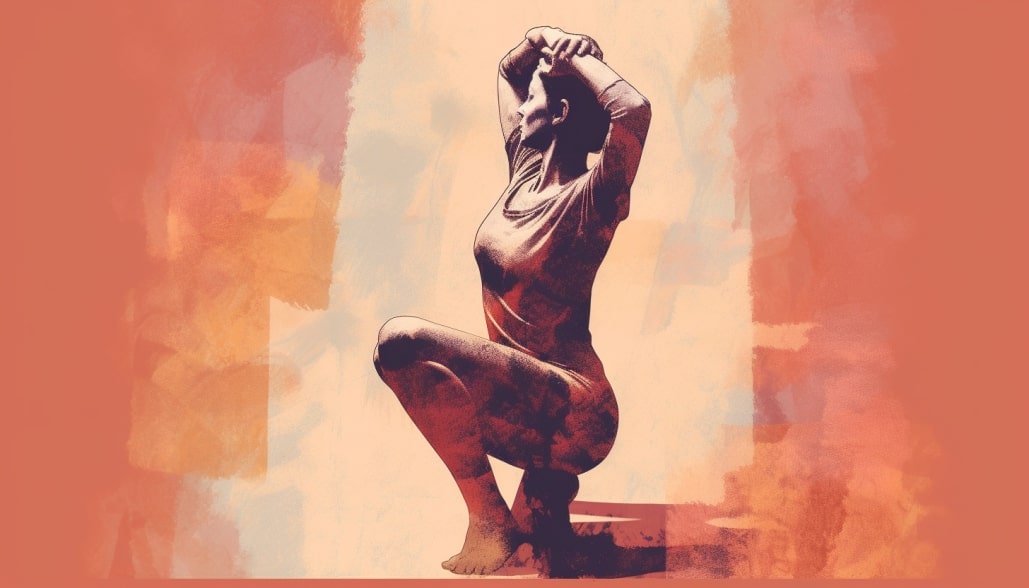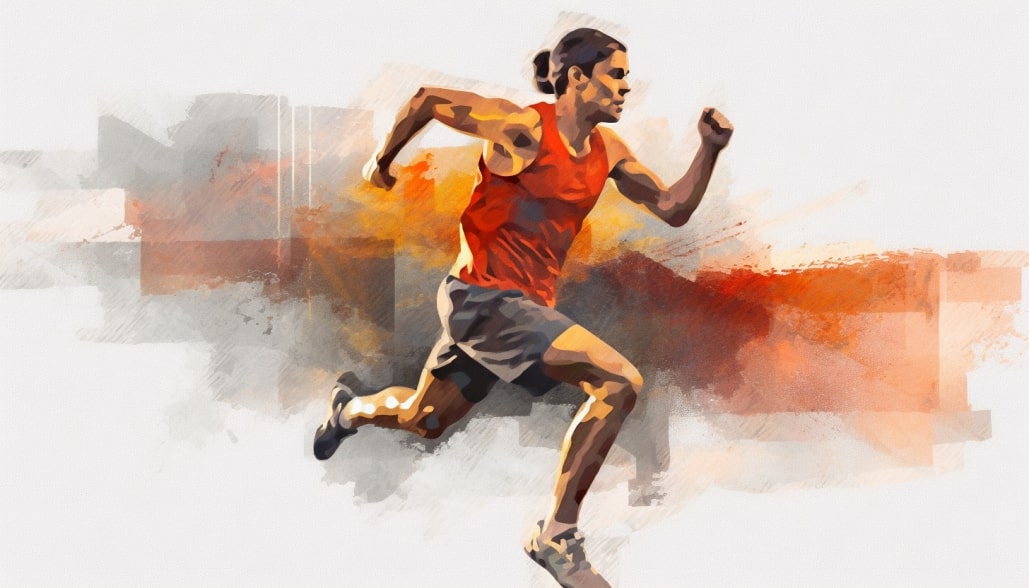The Connection Between Massage Therapy & Enhanced Mobility
Welcome to your definitive guide to exploring the connection between massage therapy and improved mobility. In a time when self-care is more than just a luxury but an essential component of life, it’s crucial that we immerse ourselves in the realm of massage therapy and grasp how it harmonizes with mobility enhancement. Whether you’re an athlete seeking performance gains, a hardworking professional in need of stress reduction, or a health devotee pursuing a superior quality of life, this journey is tailored for you. Get ready to unravel the science, advantages, and practical measures to incorporate the potent aspects of massage therapy and enhanced mobility into your wellness routine.
Introduction
The world of massage therapy and enhanced mobility is a fascinating one. Let’s start by understanding what these concepts mean.
Massage therapy, in essence, is the manipulation of soft body tissues (muscle, connective tissue, tendons, and ligaments) to enhance a person’s health and well-being. From a soothing Swedish massage to the deep pressure of a sports massage, there’s a plethora of techniques designed for different purposes and individuals.
Enhanced mobility, on the other hand, refers to the ability to move a joint through its full range of motion with ease and without discomfort. It’s a crucial aspect of physical fitness and a cornerstone of injury prevention and recovery.
When combined, massage therapy and enhanced mobility create a powerful duo that can elevate your health to new heights. By incorporating regular massage therapy into your routine, you can improve your mobility, allowing you to move freely, perform better, and live a more fulfilling life.
Importance of massage therapy and mobility
The importance of massage therapy and enhanced mobility cannot be overstated. With our increasingly sedentary lifestyles and the stressors of daily life, our bodies often bear the brunt of these pressures, leading to muscle tension, stiffness, and decreased mobility.
Massage therapy offers a potent remedy to these issues. It works by releasing muscle tension, improving blood flow, and promoting relaxation. These effects not only make you feel good but also lead to tangible health benefits. It’s been shown to reduce pain and inflammation, improve sleep quality, and even enhance immune function.
As for mobility, it’s fundamental to our ability to move and function. Good mobility allows us to perform daily tasks with ease, participate in physical activities we enjoy, and prevent injuries. It plays a vital role in our overall quality of life.
How massage therapy can enhance mobility
Massage therapy can work wonders for your mobility. It achieves this through several mechanisms. First, by reducing muscle tension and breaking up adhesions (knots), massage can help restore normal muscle length and function, leading to improved joint movement.
Second, massage can improve circulation, delivering more nutrients to your muscles and helping remove waste products. This enhanced circulation promotes healthier tissues and better mobility.
Third, massage can help increase your body’s production of certain chemicals, like endorphins, which can help relax your muscles and make movement easier.
Key Takeaways:
- Massage therapy and enhanced mobility are both crucial for optimal health and well-being.
- Regular massage can lead to a range of benefits, including better mobility, reduced pain, improved sleep, and enhanced immune function.
- Improved mobility can enhance your quality of life, allowing you to move freely and perform daily tasks with ease.
- Massage therapy can enhance mobility by reducing muscle tension, improving circulation, and promoting the production of relaxation chemicals in your body.
Benefits of Combining Massage Therapy and Enhanced Mobility
The dynamic duo of massage therapy and enhanced mobility can transform your life in various ways. Let’s explore some of the most significant benefits.
Alleviate muscle tension and soreness
Massage therapy is a powerful tool for reducing muscle tension and alleviating soreness. It can help relax tight muscles, improve circulation, and speed up the healing process. As a result, your muscles will feel refreshed, allowing you to move with greater ease and comfort.
Improve flexibility and range of motion
One of the primary goals of enhancing mobility is to increase flexibility and range of motion. Massage therapy can help you achieve this by releasing muscle tightness, breaking up adhesions, and promoting tissue health. With improved flexibility, you’ll be able to perform daily tasks more efficiently and participate in physical activities with a lower risk of injury.
Boost athletic performance
Athletes and fitness enthusiasts can reap numerous benefits from combining massage therapy and mobility work. Regular massages can improve muscle recovery, enhance flexibility, and reduce the risk of injury. These factors can lead to better performance in your chosen sport or physical activity.
Support injury prevention and recovery
Incorporating massage therapy into your routine can aid in injury prevention and recovery. By promoting flexibility and proper joint function, you’ll be less likely to experience strains and sprains. Moreover, massage can help speed up the healing process of existing injuries, getting you back to your active lifestyle sooner.
Key Takeaways:
- Combining massage therapy and enhanced mobility can lead to numerous benefits, including reduced muscle tension, improved flexibility, and better athletic performance.
- Regular massages can also support injury prevention and recovery.
- Incorporating massage therapy and mobility work into your routine can help you achieve a higher quality of life.
Massage Techniques for Enhanced Mobility
The art of massage therapy offers a wide array of techniques, each with its unique benefits and applications. Here are some of the most popular ones that can enhance your mobility:
Deep Tissue Massage
Deep tissue massage is a type of massage therapy that focuses on the deeper layers of muscle and connective tissue. It uses slow, firm strokes and deep pressure to break up adhesions and relieve tension. This technique is particularly beneficial for chronic aches and pains and can help improve mobility over time.
Sports Massage
Designed specifically for athletes, sports massage is a form of massage that combines several techniques to help improve athletic performance and aid recovery. It can help stretch tight muscles, increase range of motion, and reduce muscle stiffness post-exercise.
Myofascial Release
Myofascial release is a technique that involves applying gentle, sustained pressure to the myofascial connective tissue to eliminate pain and restore motion. It’s an excellent choice for those with chronic pain or mobility issues.
Trigger Point Therapy
Trigger point therapy focuses on relieving trigger points, which are tight knots within muscle tissue that cause pain in other parts of the body. By releasing these trigger points, this technique can help reduce pain and enhance mobility.
Key Takeaways:
- There are various massage techniques, such as deep tissue massage, sports massage, myofascial release, and trigger point therapy, that can enhance mobility.
- Each technique has its unique benefits and applications, so it’s important to choose the one that best suits your needs and preferences.
Mobility Exercises to Complement Massage Therapy
In addition to massage therapy, incorporating certain mobility exercises into your routine can further enhance your mobility and overall health. Here are a few exercises that can complement your massage therapy sessions:
Joint Rotations
Starting from your neck and working down to your ankles, perform slow, controlled circles with all your joints. This exercise helps increase blood flow and lubricate the joints, promoting better mobility.
Dynamic Stretching
Unlike static stretching, dynamic stretching involves moving parts of your body and gradually increasing reach, speed of movement, or both. It’s a great way to improve flexibility and range of motion.
Yoga
Yoga is an excellent practice for enhancing mobility. It combines stretching, strength, and balance exercises, which can all contribute to improved mobility. Plus, it’s a great way to relax and relieve stress.
Foam Rolling
Also known as self-myofascial release, foam rolling is a simple and effective way to release muscle tightness and improve flexibility. It can be particularly beneficial when done before and after a massage therapy session.
Tips for Integrating Massage Therapy into Your Routine
Making massage therapy a regular part of your routine can significantly enhance your mobility and overall well-being. However, it’s not just about booking a session and showing up. Here are some tips to help you maximize the benefits of your massage therapy sessions.
Frequency of Massage Sessions
The frequency of your massage sessions depends on your personal goals, availability, and budget. However, a general rule of thumb is to have a massage at least once a month for general wellness and relaxation. If you’re an athlete or dealing with a specific injury, you might benefit from more frequent sessions, such as once a week.
Remember, consistency is key when it comes to reaping the benefits of massage therapy. So, try to stick to a regular schedule as much as possible.
Self-Massage Techniques for At-Home Practice
In between your professional massage sessions, self-massage techniques can be a great way to maintain your muscle health and mobility. Here are a few techniques you can try:
- Foam rolling: This technique involves using a foam roller to apply pressure to specific areas of your body, helping to relieve muscle tension and improve flexibility.
- Tennis ball massage: A tennis ball can be a handy tool for self-massage. You can use it to apply pressure to tight muscles and trigger points, especially in hard-to-reach areas like the back and shoulders.
- Hand massage: A simple hand massage can do wonders for relieving tension and stress. You can use your fingers or a small massage tool to apply pressure to different areas of your hand.
Complementary Exercises to Support Mobility
In addition to massage therapy, it’s essential to incorporate mobility exercises into your routine. As discussed earlier, exercises like joint rotations, dynamic stretching, yoga, and foam rolling can enhance your flexibility, joint health, and overall mobility.
Keep in mind that consistency is crucial. Make these exercises a part of your daily routine, and you’ll likely start noticing improvements in your mobility and quality of life.
Embrace the Power of Touch
Massage therapy has the potential to transform your life by enhancing your mobility, improving your overall well-being, and helping you live a more active and pain-free life. By integrating massage therapy into your routine, practicing self-massage techniques, and incorporating complementary exercises, you’re on your way to unlocking the full potential of your body. So, embrace the power of touch and get ready to enjoy a more mobile, healthy, and fulfilling life.
Frequently Asked Questions
Can massage therapy be harmful if not done correctly?
Yes, massage therapy can potentially be harmful if not done correctly. Inappropriate techniques, excessive pressure, or working on contraindicated areas can cause pain, injury, or worsen existing conditions. It’s essential to work with a qualified and experienced massage therapist who specializes in enhancing mobility and understands your specific needs and goals.
How can I find a massage therapist that specializes in enhancing mobility?
To find a massage therapist that specializes in enhancing mobility, start by asking for recommendations from friends, family, or your healthcare provider. You can also search for massage therapists online through professional organizations like the College of Massage Therapists of Ontario (CMTO) or the Registered Massage Therapists’ Association of British Columbia (RMTBC). When contacting a therapist, don’t hesitate to ask about their experience, qualifications, and areas of expertise.
Are there any contraindications for massage therapy and enhanced mobility?
There are certain contraindications for massage therapy, such as acute inflammation, fever, or contagious skin conditions, which could make it unsafe for you to receive treatment. It’s essential to inform your massage therapist of any health concerns or medical conditions you have before starting a session. A qualified therapist will assess your situation and determine if massage therapy is appropriate for you or if any modifications need to be made to ensure your safety.
How soon can I expect to see improvements in my mobility after starting massage therapy?
The time it takes to see improvements in mobility after starting massage therapy varies from person to person. Factors such as the severity of your mobility issues, the frequency of your sessions, and your commitment to complementary exercises can all affect the rate of progress. Some individuals may notice improvements after just a few sessions, while others might require a more extended period of consistent treatment. Be patient and remember that lasting change takes time.
Can I combine massage therapy with other treatments like chiropractic care or physical therapy?
Yes, combining massage therapy with other treatments like chiropractic care or physical therapy can be an effective way to enhance mobility and address underlying issues. These complementary therapies can work synergistically to improve your overall well-being and help you reach your mobility goals more efficiently. It’s essential to consult with your healthcare provider and massage therapist to develop a personalized treatment plan that meets your specific needs.
Sources
- Stamoulos, John. “Why Mobility Matters and How Massage Can Help – Somatic Services.” Somaticservices.com, 2021, www.somaticservices.com/2021/01/15/why-mobility-matters-and-how-massage-can-help/. Accessed 23 May 2023.
- Aubrey, Cameron. “Why Massage Therapy Is an Essential Part of Physical Therapy – Discover Massage Australia.” Discover Massage Australia, 2 Feb. 2022, www.discovermassage.com.au/blog/why-massage-therapy-is-an-essential-part-of-physical-therapy/. Accessed 23 May 2023.
- CareDimensions. “Self Massage Techniques.” YouTube, YouTube Video, 13 Apr. 2020, www.youtube.com/watch?v=PyJ3_cDKylU&t=2s. Accessed 23 May 2023.

Mark Bentz is a highly experienced Registered Massage Therapist (RMT) with over two decades of practice. Despite having only two percent of his vision due to a progressive retinal degenerative condition, Mark’s unique perspective and heightened senses allow him to deliver a powerful and intuitive massage therapy experience. With a background in Human Kinetics and extensive training at the West Coast College of Massage Therapy (WCCMT), Mark is adept at identifying and releasing primary restrictions in the body, enabling the alleviation of secondary symptoms. Mark’s commitment to the field is further demonstrated by his active involvement with Provincial, National, and International massage therapy organizations. You can request a session with Mark by contacting Everest Therapeutics.








